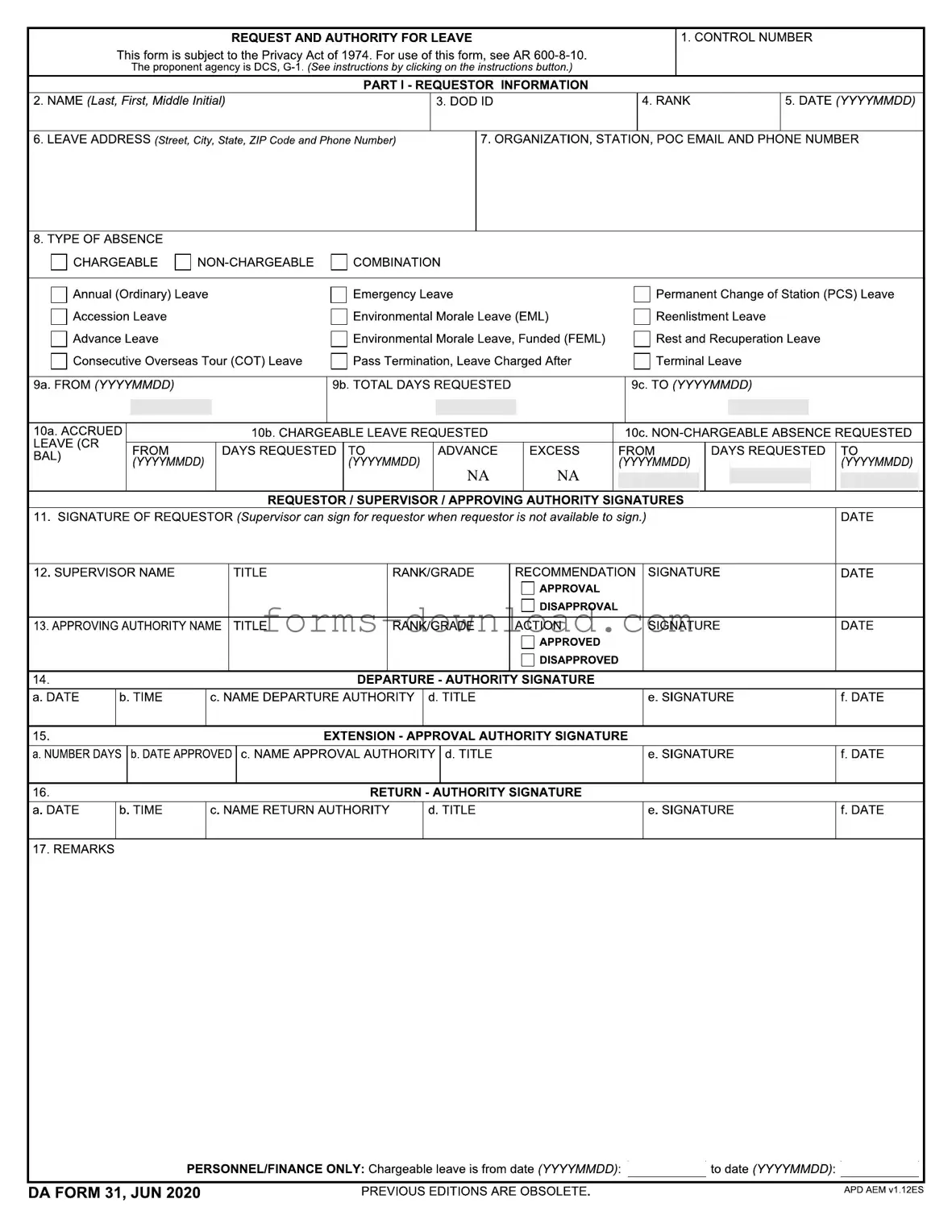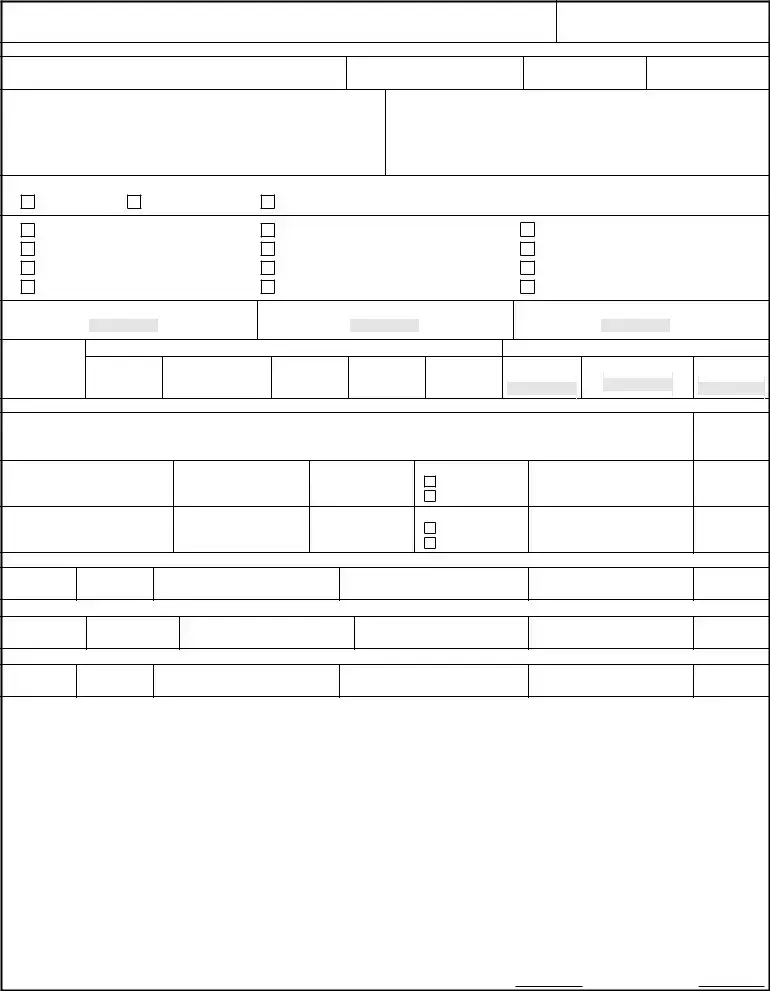The DA Form 31, formally known as the Request and Authority for Leave, plays a crucial role in the process of requesting leave for military personnel. This essential document is governed by the Privacy Act of 1974, ensuring that personal information is protected throughout the leave application process. It is designed to capture important details such as the requestor's name, rank, and organization, as well as specific leave dates and types. The form allows service members to indicate whether their leave is chargeable or non-chargeable and to specify the nature of their absence, which can range from annual leave to emergency leave or even leave related to a permanent change of station. Additionally, the DA Form 31 requires signatures from both the requestor and their supervisor, along with an approving authority, to finalize the leave request. This structured approach not only streamlines the process but also ensures that all necessary approvals are obtained before a service member departs. Understanding the DA Form 31 is vital for military personnel seeking to navigate their leave options effectively and responsibly.

